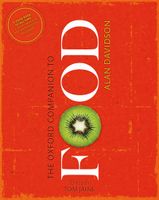Advertisement
Jointing Lamb
Published 2014
Sucking lambs are often cooked whole, or cut into quarters, a leg of baby lamb providing two servings. Older lambs are still relatively small creatures, and there are none of the complex patterns of jointing associated with beef; similar cuts are found in Britain, the USA, and France. The animal is split down the backbone and cut into fore and hind quarters. The former yields the shoulder joint, containing the blade bone; the rest of the quarter is split into the breast; the ‘scrag end’ (the neck closest to the head); and the ‘best end’, which lies further back. This last cut, which contains an ‘eye’ of good meat, is much exploited. It can be separated into individual ribs to give cutlets or left in one piece and roasted as a ‘rack’; this is what is called carré d'agneau in French, a famous dish. Two racks, with the ends of the ribs exposed and arranged to intersect, make a ‘guard of honour’; sewn together to make a circle with the meat on the inside and the curved bones radiating outwards, they make a ‘crown’. If the two racks are cut from the carcass without splitting the backbone, they equal a ‘chine’.


